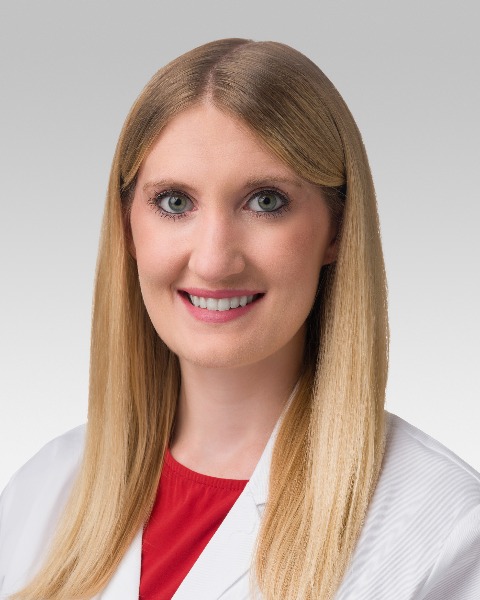Poster Session 1
(366) Neonatal inflammatory profiles associated with perinatally acquired HCV infection
Thursday, January 30, 2025
10:30 AM - 12:30 PM

Stephanie A. Fisher, MD, MPH (she/her/hers)
Assistant Professor of Obstetrics and Gynecology
Northwestern University Feinberg School of Medicine
Chicago, IL, United States
Submitting Author and Presenting Author(s)
Objective:
To identify plasma inflammatory cytokine and chemokine profiles associated with hepatitis C virus (HCV) infection among infants with perinatal HCV exposure.
Study Design: Nested case-control study of infants born to pregnant people with HCV viremia enrolled in a prospective, multisite, observational cohort study of perinatal HCV transmission (2012-21). Cases were infants with perinatally acquired HCV infection (positive HCV RNA PCR at 2 months of life). Negative controls were matched on center, term vs. preterm birth, and peak maternal viral load (HCV RNA >106 IU/ml vs. HCV RNA ≤106 IU/ml) during pregnancy. We assessed pro-inflammatory cytokine and chemokine (TNF-α, IL-1RA, IL-18, FGF-basic, PD-L1, CXCL10/IP-10) concentrations in infant plasma drawn at 2 months of life. Quantile regression was used to compare the distribution of cytokine and chemokine concentrations between cases and controls; box plots depicting their log-transformed concentrations were generated.
Results: Perinatal transmission occurred in 26 infants (8%) born to 314 individuals. Of infants without exposure to HIV (N=24), 11 had had 2-month samples available for analysis. In 11 cases and 11 controls, the mean gestational age at birth was 38 ± 2 weeks (3 cases and 2 controls were born preterm). Median PD-L1 concentration was higher in cases than controls (79 vs. 58 pg/ml; difference in medians, 95 % CI 22 pg/ml, 3 - 41; p = 0.03). Median CXCL10/IP-10 concentration was higher in cases than controls, but not statistically significantly (100 vs 57, p > 0.05). The distributions of other detectable cytokine concentrations were similar between groups (Table, Figure).
Conclusion: Compared to HCV-exposed uninfected infants at 2 months of life, infants with perinatal HCV infection demonstrate upregulation of PD-L1, a signature of functional CD8 T-cell exhaustion. Understanding the role of the PD-1/PD-L pathway and regulation of cytotoxic T-cell responses requires further investigation in infants exposed to HCV viremia in utero.
To identify plasma inflammatory cytokine and chemokine profiles associated with hepatitis C virus (HCV) infection among infants with perinatal HCV exposure.
Study Design: Nested case-control study of infants born to pregnant people with HCV viremia enrolled in a prospective, multisite, observational cohort study of perinatal HCV transmission (2012-21). Cases were infants with perinatally acquired HCV infection (positive HCV RNA PCR at 2 months of life). Negative controls were matched on center, term vs. preterm birth, and peak maternal viral load (HCV RNA >106 IU/ml vs. HCV RNA ≤106 IU/ml) during pregnancy. We assessed pro-inflammatory cytokine and chemokine (TNF-α, IL-1RA, IL-18, FGF-basic, PD-L1, CXCL10/IP-10) concentrations in infant plasma drawn at 2 months of life. Quantile regression was used to compare the distribution of cytokine and chemokine concentrations between cases and controls; box plots depicting their log-transformed concentrations were generated.
Results: Perinatal transmission occurred in 26 infants (8%) born to 314 individuals. Of infants without exposure to HIV (N=24), 11 had had 2-month samples available for analysis. In 11 cases and 11 controls, the mean gestational age at birth was 38 ± 2 weeks (3 cases and 2 controls were born preterm). Median PD-L1 concentration was higher in cases than controls (79 vs. 58 pg/ml; difference in medians, 95 % CI 22 pg/ml, 3 - 41; p = 0.03). Median CXCL10/IP-10 concentration was higher in cases than controls, but not statistically significantly (100 vs 57, p > 0.05). The distributions of other detectable cytokine concentrations were similar between groups (Table, Figure).
Conclusion: Compared to HCV-exposed uninfected infants at 2 months of life, infants with perinatal HCV infection demonstrate upregulation of PD-L1, a signature of functional CD8 T-cell exhaustion. Understanding the role of the PD-1/PD-L pathway and regulation of cytotoxic T-cell responses requires further investigation in infants exposed to HCV viremia in utero.

